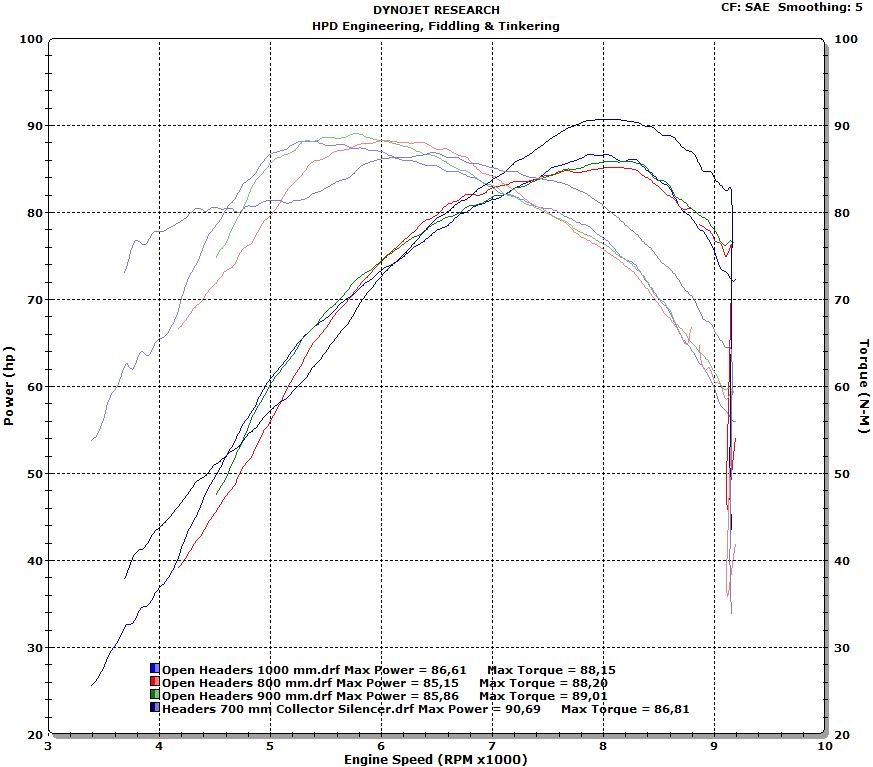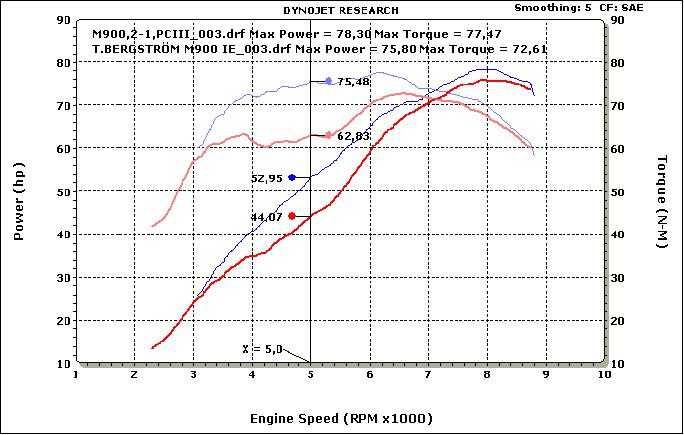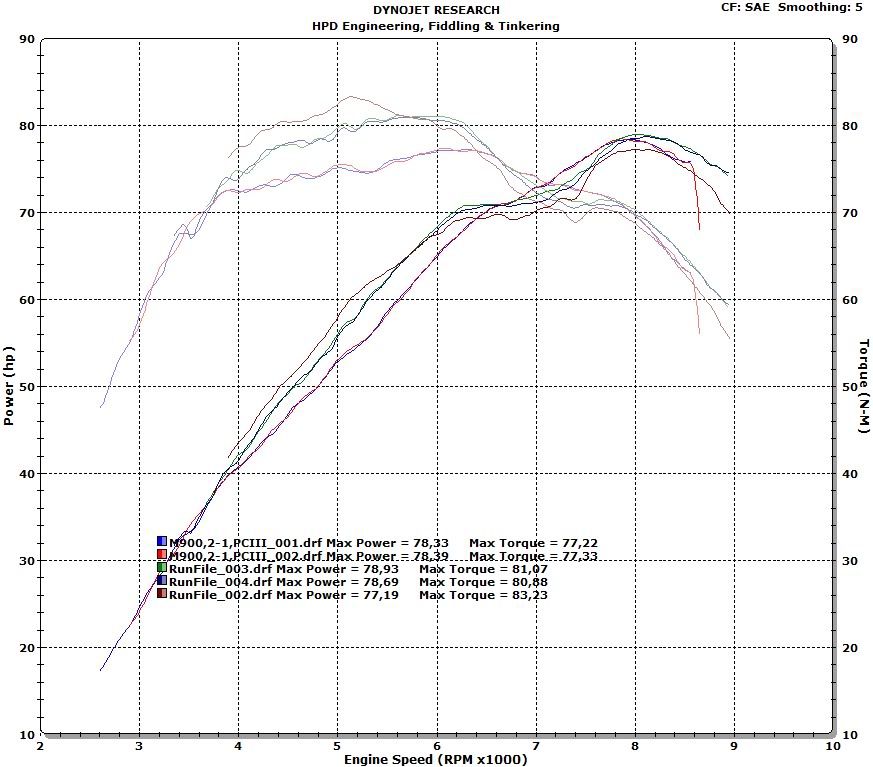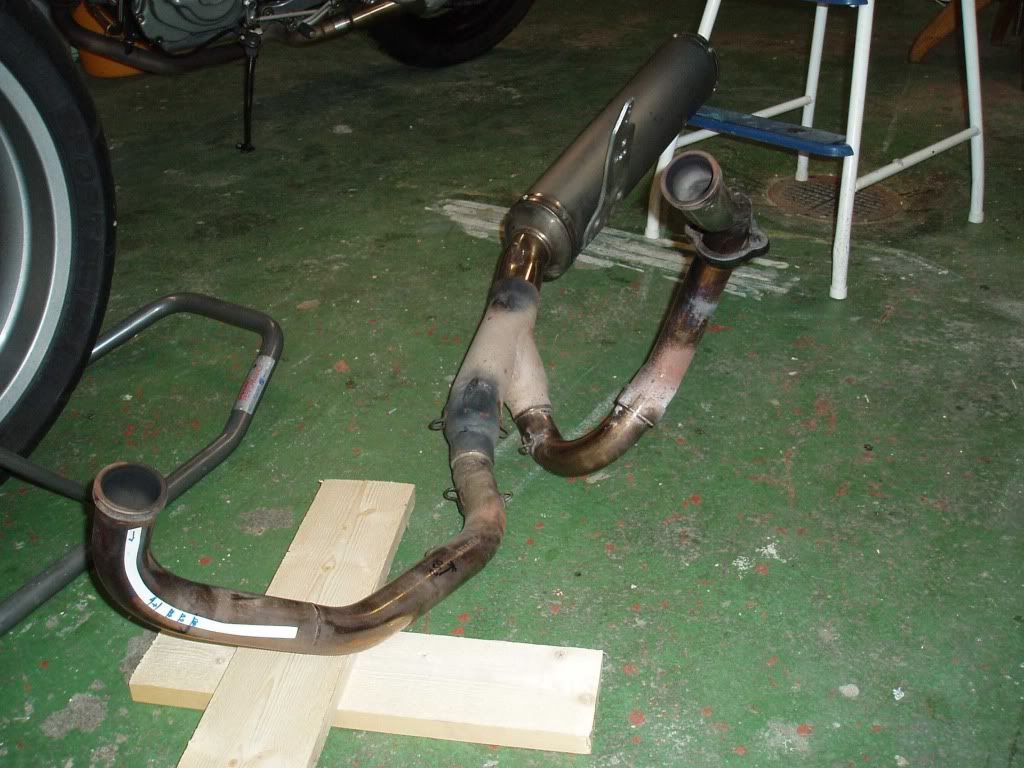Very interesting.
I´ve been digging in my files and dyno runs, unfortunately I´ve not been as thorough with making notes as I should.
I will post some dyno runs and pictures here, even though they´ve been on the forum in other threads already; I think they are relevant here so bear with me.
Concerning split headers, your claim that split headers will produce less bottom end torque seems valid (i.e., on a general level).
The link below will take you to a race team running (at the time) an 800, and dyno runs from an (unknown) 2-1 system, and a split-header (i.e., 2-2) system with megaphones: The 2-1 system is clearly better at low revs.
While you´re at it, take a look at the rest of their storys also, quite interesting.
http://beta-evo-db1.blogspot.se/p/2010-beta-evo-mk2-specs.htmlMy own experiments with various-length open headers, and then the full 2-1 system, shows the same trend:

I have no real idea why the full system was also better on top end, but so it seems to be. Certainly room for more investigations here.
The next graph shows comparison between my 2-1, and stock with slip-on:

It´s not a direct comparison, since the 2-1 graph also shows the effects of an open air-box lid and PCIII.
They don´t start at the same RPM either, but at least it seems likely that they would be much the same below 3000 RPM or so. If the difference after that is down to exhaust or to airbox+PCIII, I don´t know but at least the 2-1 is not worse that the stock X-junction. I think.
Last, a comparison between my Monster 2-1, and the rain-bike 2-1:

The systems look quite different:
Monster 2-1:

Rain bike 2-1:

In spite of the systems beeing quite different in layout, they give pretty similiar results, maybe the better result on the rain bike at lower revs is due to the 2 headers ending close to each other in the Y junction.
Having looked into my "Scientific Design of Intake and Exhaust systems", I have a theory concerning the difference in low-end torque between 2-1 and 2-2 (please note: a theory, I don´t know).
The 2-1 system uses "independent" headers designed to be long enough to work without influencing the other, and returning a negative-pressure pulse to the exhaust valve during overlap.
On many 4-or 6-cylinder engines, Y-shaped headers connecting cylinders with even firing intervals are used; these systems are called "Interference headers". They often give better low-end torque since the "dead" branch of the Y acts as a resonator, increasing the amplitude of the pressure pulses and thus increasing the vacuum on the still-open exhaust valve at valve overlap.
This works well enough to have some people put a "dead" pipe on headers without a cylinder to connect to, just to get the resonator effect. Hard to incorporate on a bike without styling impact, though ...
Some of you might also remember the Y-type exhaust systems sold by Dunstall for Hondas, Nortons etc. in the 70´s. Worket great at the time, at least. They were designed by the late and great Gordon Blair at some university in GB.
My theory is that the non-working header in a 2-1 system work as such a resonator, working only at very low revs since it is so long.
In my case, I will be using the megaphones for a track bike, so a little loss below 4000 or so RPM is OK if I gain something at higher revs. For a commuter bike, this might not be so.
It will be very interesting to see if there is any change if you change timing etc., and also to hear your riding impressions.

